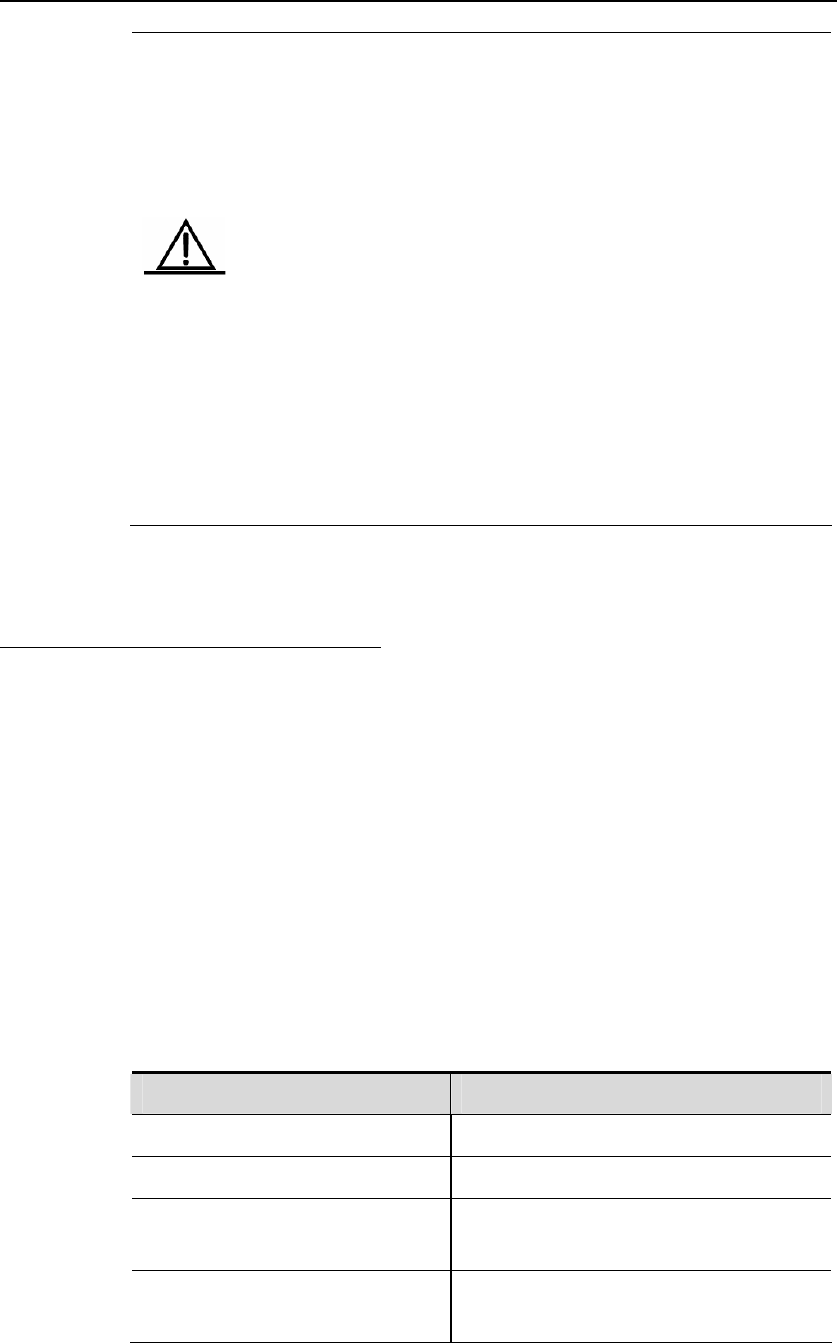
DES-7200 Configuration Guide Chapter 3 BFD Configuration
3-17
Cautio
n
When configuring BFD for IPv4 PBR, the route information source
(source address for RIP route updating packet) of two devices
with RIP enabled shall be in the same network segment to
establish the BFD session between adjacent routers.
Before enabling BFD for IPv4 PBR, the BFD session parameter
must be configured, or it is ineffective.
For the non-unnumbered interface, if the neighbor end and the
local end are not connected directly, the BFD for IPv4 PBR fails to
be enabled.
The BFD session cannot be established if the specified interface
and the actual outbound interface for the BFD packets are
inconsistent because of the IP routing.
The BFD session cannot be established if the specified interface
and the actual incoming interface for the BFD packets are
inconsistent.
3.3.7 Configuring the BFD for
OSPF
OSPF protocol dynamically discovers the neighbors by the Hello packets. With
BFD for OSPF configured, the BFD session for the neighbors in FULL
relationship will be established and the neighbor state will be detected by the
BFD mechanism. Once BFD neighbor is invalid, OSPF processes the network
convergence. The convergence time could be from 120s(by default, the sending
interval of the OSPF Hello packet in non-broadcast network is 30s, which is a
quarter of the invalid time for the adjacency router, namely, 120s) to less than
1s.
Use the bfd all-interfaces command to configure the BFD for OSPF on all
interfaces. Or use the ip rip bfd [disable] command in the interface
configuration mode to enable or disable the BFD for OSPF on the specified
interface.
Command Function
DES-7200>enable
Enter the privileged mode.
DES-7200# configure terminal
Enter the global configuration mode.
DES-7200(config)# router ospf
process-id
Enter the Router configuration mode.
DES-7200(config-router)# bfd
all-interfaces
Enable the BFD for OSPF on all interfaces.


















